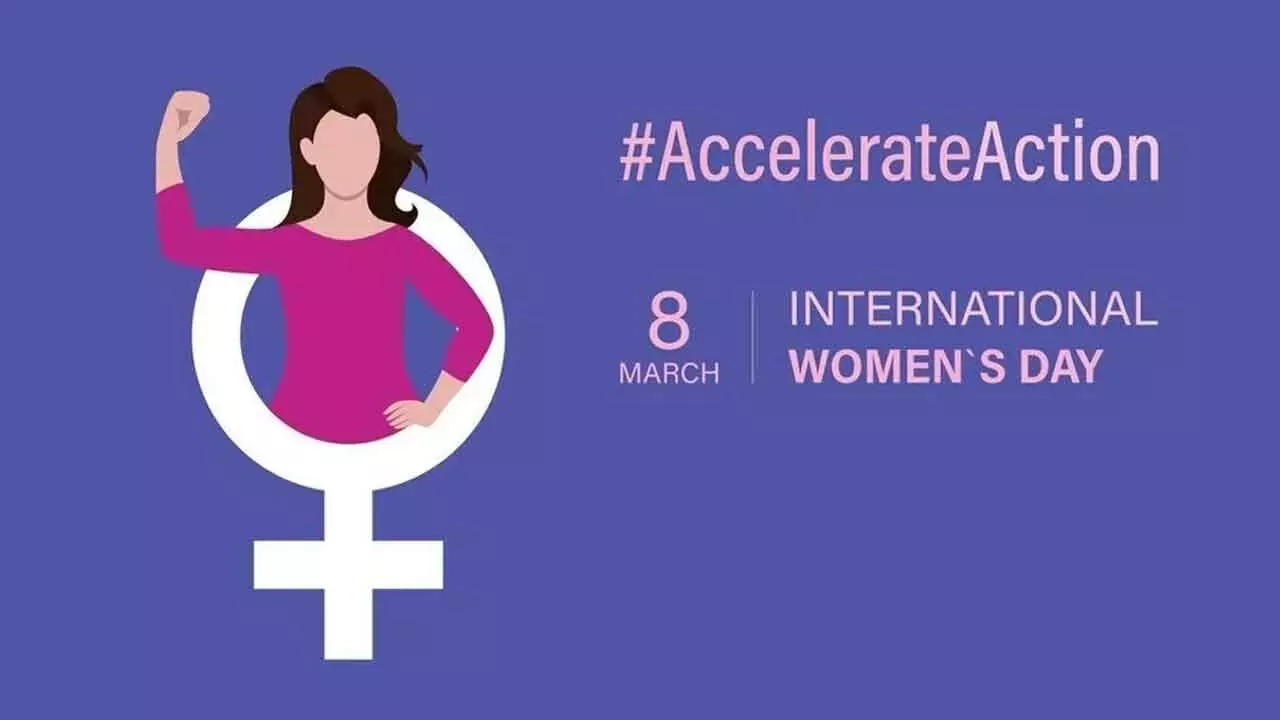Women’s Day special: Focussing on the need to ‘accelerate action’
In 1922, Vladimir Lenin declared March 8 as International Women’s Day to honour their role in the 1917 Russian Revolution
Women’s Day special: Focussing on the need to ‘accelerate action’

In India, the first observance of International Women's Day dates back to 1914, with a celebration held in Pune. It gained significance during the independence movement, as women played a crucial role in freedom struggles
International Women’s Day, celebrated every year on March 8, is an important occasion to raise awareness about women’s achievements, struggles and their rights.
The day is not only to celebrate their social, economic, cultural and political achievements, but also to highlight the challenges and inequalities that women face, the world over.
The International Women’s Day took shape in New York City in 1908, when 15,000 women marched the streets demanding voting rights and better working conditions. Two years later, at an International Socialist Women’s Conference held in Copenhagen in 1910, Clara Zetkin proposed to celebrate this day as the International Women’s Day.
In 1911, the first International Women’s Day was celebrated on March 19. It was attended by millions of women from Austria, Denmark, Germany and Switzerland. In 1921, it was decided to celebrate this day permanently on March 8.
On March 8, 1917, during the Russian Revolution, women working in the textile industry at Petrograd (St. Petersburg), Russia, went on strike to protest World War I, food shortages and poor living conditions. They demanded ‘bread and peace’. Four days into the strike, the tsar was forced to abdicate, and the provisional government granted women the right to vote.
According to the Julian calendar which was then in use in Russia, the women’s strike began on February 23. And as per Gregorian calendar (current English calendar) this date was March 8.
In 1922, Vladimir Lenin, the first head of the government of Soviet Russia, declared March 8 as International Women’s Day to honour women’s role in 1917 Russian Revolution. Subsequently March 8 was celebrated as International Women’s Day by the socialist movement and communist countries.
In 1977, the United Nations officially recognized March 8 as the International Women’s Day.
The theme for this year 2025 International Women’s Day will be “Accelerate Action”.
According to data from the World Economic Forum (WEF), true gender parity will not be achieved until 2158, or almost five generations from now, if the current trend continues. Emphasising the necessity of accelerating action highlights how critical it is to act quickly and forcefully to achieve gender equality. It urges greater vigor and urgency in tackling the structural prejudices and obstacles that women encounter in both the personal and professional domains.
As much as the day is a celebration of women’s achievements, resilience, and contributions to society, it is also a reminder of their ongoing fight for gender equality and rights. The day highlights the progress made while acknowledging the challenges women still face, such as wage disparity, discrimination and limited opportunities across sectors. It encourages global action to create a more inclusive and empowered world.
As the Father of Indian Constitution-- BR Ambedkar once rightly said, "I measure the progress of a community by the degree of progress which women have achieved”.
Every year on February 13, India celebrates National Women’s Day to honour the birth anniversary of Sarojini Naidu. She was a key figure in India’s freedom struggle and a strong advocate of women’s rights and gender equality. This day serves as a reminder of her remarkable contributions to Indian history and encourages women’s empowerment, leadership, and equal opportunities.
In India, the first observance of International Women's Day dates back to 1914, with a celebration held in Pune. The day gained significance during the independence movement, as women played a crucial role in protests and freedom struggles.
The day fosters worldwide solidarity among women from diverse backgrounds, sparking discussions on policies and societal norms that shape their lives.
International Women's Day fosters global unity among women from all walks of life, sparking conversations on policies and societal norms that influence their rights and opportunities.
The colours associated with International Women’s Day (IWD) are purple, green, and white. Purple represents justice and dignity. It is historically linked to the women’s rights movement and symbolises loyalty to the cause. Green signifies hope and is often associated with growth and progress. White historically represented purity, though its interpretation has evolved over time.
These colours were first used by the Women’s Social and Political Union (WSPU) in the UK in 1908 and have since become widely recognized for IWD celebrations.

